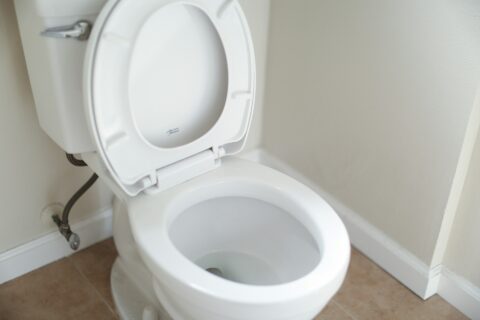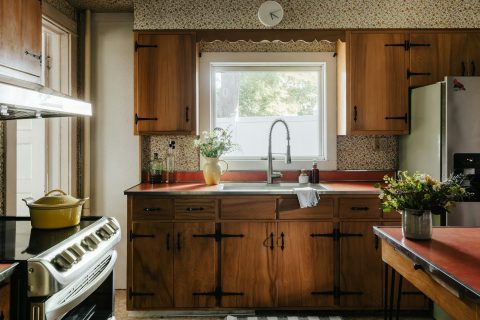
Noisy neighbors, loud music, or street sounds can ruin your peace. Sometimes, it feels impossible to enjoy quiet in your own home. A noisy room can also make work or sleep harder than it should be.
Soundproofing helps block unwanted noise. It uses acoustic foam, mass-loaded vinyl (MLV), and thick curtains to reduce sound entering or leaving a space. These tools help create a calm environment.
This guide will walk you through the steps of soundproofing a room. It covers everything you need to create a quieter space, from fixing gaps to choosing the best materials. Keep reading!
Jump to Section [Hide]
Understanding Soundproofing Basics
Soundproofing blocks or reduces sound. It uses materials that absorb, dampen, or isolate noise. Thicker walls with insulation work better for sound control. The standard STC (Sound Transmission Class) is around 40, but higher ratings, like 65, require double drywall layers and special stud walls.
Acoustic panels or mineral wool help reduce echo and reverb. The NRC (Noise Reduction Coefficient) shows how well something absorbs sound; its values range from 0 to 1. For example, an acoustic tile with a high NRC traps more noise inside the room, making it quieter.
Identifying Problem Areas in Your Room
Start by checking for air gaps in doors, windows, and walls. Even small cracks or openings can let noise through. Use a flashlight or test with your ear near these areas to spot leaks.
Next, check ducts and vents that allow flanking noise to travel between rooms. Pay attention to structural elements like thin partition walls or hollow floors that amplify sound.
Test the room with a noise meter app to find spots where sound escapes most easily. Placing speakers or subwoofers near shared walls may also worsen the problem. Consider moving them away from those areas.
Key Areas to Soundproof
Pay attention to the main spots where sound sneaks in; each area plays a noise control role. Keep reading to learn how to tackle them!
Walls
Focus on adding mass to your walls. Mass-loaded vinyl (MLV) is a soundproofing material that blocks noise and is easy to install. QuietRock drywall can also drastically reduce sound transmission.
Each sheet costs $40-$50, making it about $300 for one small wall.
Acoustic sealant can stop sound leaks in gaps or cracks. Batt insulation within the wall adds another layer of sound absorption. Soundproof wallpaper or acoustic panels improve quietness while blending with decor.
Arrange bookshelves along noisy walls for extra noise control at no additional cost!
Floors
To reduce noise, cover your floors with thick rugs or carpets. For better sound insulation, use soundproof underlays like Acoustik™ or Quiet-Floor. Rubber gym flooring can also absorb vibrations and dampen sounds effectively.
Mass-loaded vinyl (MLV) is another option. It weighs 1 pound per square foot and is only 1/8 inch thick, making it easy to install under floor coverings. Try layering materials for even more sound-dampening effects!
Ceilings
Add acoustic ceiling tiles to block sound. These tiles, like Groove Melamine Foam, absorb noise and reduce echoes. They are easy to install and fire-safe if you pick approved materials.
You can finish this in under 2 hours.
Use mass-loaded vinyl (MLV) for extra soundproofing. It adds weight to prevent sound waves from passing through the ceiling. Pair it with resilient channels for even more isolation. This setup helps reduce noise transfer above your room!
Doors
If not appropriately treated, doors can let in a lot of noise. Solid hardwood doors work best for soundproofing because they block more sound than hollow ones. If changing the door isn’t an option, focus on sealing gaps around it.
Use weatherstripping or Acousti-Gasket™ Tape to keep sound from sneaking through cracks.
Install a door sweep at the bottom to close any air gaps. For extra insulation, you can also hang noise-canceling curtains over the door. Acoustic foam panels add even more protection by absorbing sounds hitting the surface.
Use adjustable seals like AcoustiSeal™ around the edges of your doorframe for maximum results.
Windows
Windows are weak spots for noise. Use soundproof curtains or blinds to block outside sounds. These can reduce noise by up to 50%. Double-glazed windows work even better, significantly reducing sound transmission loss.
You could also add weatherstripping around the edges to seal gaps.
Mass-loaded vinyl (MLV) is also a smart choice. It’s heavy, and the blocks sound good: 1 pound per square foot and just 1/8” thick. For added protection, install it over glass or as an extra layer on window frames.
Recommended Soundproofing Materials
Discover essential soundproofing tools, each crafted to block noise and enhance tranquility.
Acoustic Panels
Acoustic panels absorb sound and reduce echoes. They work well for walls or ceilings. Brands like CFAB™ Cellulose Acoustical Panels, Poly Max™, and Sound Silencer™ are great options.
Each panel has an NRC (Noise Reduction Coefficient) rating between 0 and 1; the higher the rating, the better the sound isolation.
Various designs and colors are available to make mounting panels easy. Wood Wool and Silk Metal™ offer stylish yet functional choices. These panels improve acoustic insulation in any space, perfect for a quiet room or studio!
Soundproof Curtains and Blinds
Soundproof curtains and blinds help block noise from outside. They are thick and heavy, made with dense fabrics like velvet or polyester. Some brands, like Echo Barrier™ and FABRISORB™, can reduce sound while improving room acoustics.
These curtains also keep rooms warmer by stopping drafts.
Noise-canceling options work well for doors and windows and are cheaper than other soundproofing methods. DIY costs range between $200 and $600. For eco-friendly choices, choose green textiles or InsulGreen™ products.
Double-layered designs increase effectiveness against loud noises.
Weatherstripping
Seal gaps around doors and windows using weatherstripping. It effectively blocks sound and air leaks. Use adhesive-backed foam strips or rubber seals for easy application. Acousti-Gasket™ Tape works great for better results.
Place it along the edges where frames meet walls or floors. This will prevent noise from sneaking through tiny cracks. You can also add door sweeps at the bottom to seal off extra space. These methods will quickly improve your room’s soundproofing!
Mass Loaded Vinyl (MLV)
Mass-loaded vinyl (MLV) is a dense, flexible soundproofing material that weighs about 1 pound per square foot and is only 1/8 inch thick. It can be applied to walls, floors, or ceilings to reduce noise and vibrations.
This extra mass blocks sound from traveling through surfaces.
Install MLV behind drywall or under flooring for the best results. DIY costs range from $200 to $600, depending on the size of your space, while hiring a pro adds $150-$200 more. When paired with double layers of 5/8-inch drywall and staggered joints, it’s an effective way to boost Sound Transmission Class (STC) ratings above 65.
Acoustic Foam
Acoustic foam absorbs sound waves, reducing echo and improving soundproofing in a room. Most acoustic treatments use melamine or polyurethane foam, which are light, durable, and effective at dampening noise.
For the best results, look for foam with a thickness of 2 inches. Higher NRC values closer to 1 mean better absorption of unwanted sounds. You can install hanging baffles or adhesive panels on walls and ceilings.
They come in different shapes, like pyramids or wedges, adding style to your space while improving acoustics!
Rugs, Carpets, and Underlays
Thick rugs and carpets help block sound. They absorb noise and reduce echoes in a room. Adding layers like Acoustik™ or Quiet-Floor underlays boosts soundproofing. These materials work well on wood, concrete, or tile floors.
Rubber gym flooring is another excellent option. It dampens vibrations and muffles footsteps. For eco-friendly choices, pick InsulGreen™ Cellulose Batt Insulation under your carpet. These solutions can make your space quieter in just 2 hours!
Step-by-Step Guide to Soundproofing a Room
Making your room quieter requires small, precise steps. Learn how to improve the soundproofing of walls, floors, and even windows one piece at a time!
Sealing Gaps and Cracks
Close all gaps and cracks in your room. Use AcoustiSeal™ Acoustical Sealant for edges and small spaces around windows, doors, or baseboards. Apply weatherstripping to seal air gaps on window frames and door edges.
Check forced air ducts, they carry sound easily. Cover them with acoustic tape like Acousti-Gasket™ Tape to block noise leaks. Even tiny holes or openings make a big difference in reducing sound.
Fill every gap for the best soundproofing results.
Installing Acoustic Panels or Foam
Acoustic panels and foam reduce noise by absorbing sound waves. For better results, use materials like CFAB™ Cellulose Panels or Sound Silencer™. For strong absorption, choose panels with a high NRC value, close to 1.
Install them on walls where the echo is worst.
For good coverage, choose 2-inch-thick polyurethane or melamine foam. Attach the panels using adhesive sprays, hooks, or brackets. You can also match the panel colors to your room design! Acoustic tiles can also help soundproof ceilings if needed.
Adding Rugs, Carpets, and Underlays
Cover your floors with thick rugs or carpets. These help absorb sound and reduce noise bouncing around the room. Use soft, dense materials for better soundproofing. Rubber gym flooring can work, too, if you want extra padding.
Soundproof underlays are a great addition to rugs or carpets. For best results, try products like Acoustik™ or Quiet-Floor underlays. They block noise from traveling through floors and add comfort.
Choose eco-friendly options like InsulGreen™ to stay green while cutting sound transfer.
Enhancing Doors with Sweeps and Seals
Seal gaps to block noise from your door. Use door sweeps at the bottom to stop sound leaks. They also keep out drafts and insects. Solid hardwood doors work better than hollow ones for blocking noise.
Add weatherstripping around the edges. It seals cracks where sound escapes. If you notice uneven gaps, an adjustable door seal can help. Attach acoustic foam panels or use noise-canceling curtains over the door for extra quiet.
Using Soundproof Curtains or Blinds
Hang thick, soundproof curtains on your windows. They block outside noises and reduce echoes in the room. Noise-canceling curtains, like FABRISORB™, also work well for doors.
Choose materials with dense layers to trap more sound. These are budget-friendly and easy to install. Thick blinds also help cut noise while adding privacy.
Adding Mass to Walls with MLV
Mass-loaded vinyl (MLV) is a great way to soundproof walls. It’s heavy but thin, only 1/8 inch thick and weighing 1 pound per square foot. You can attach it directly to walls, adding mass and effectively blocking sound waves.
Cut the MLV sheet to fit your wall size. Secure it in place with screws or nails, covering as much of the surface as possible. Seal the edges with acoustic caulk for better results. This improves insulation and reduces noise leaks without changing the look of your room!
Budget-Friendly Soundproofing Tips
You can soundproof your room without spending much. Simple changes and everyday items can make a big difference. Start small and see the results!
Using Bookshelves and Heavy Furniture
Place tall bookshelves against thin walls. Fill them with lots of books to add mass and block sound. Heavy furniture like wooden dressers or cabinets can also act as barriers, reducing noise from outside.
Position couches or chairs near doors and windows for extra sound deadening. Use these items to cover gaps where sound might escape. This cheap and quick method makes it ideal for DIY soundproofing projects.
DIY Soundproof Panels
You can make soundproof panels using wood frames, fiberglass insulation, and fabric. First, cut a wooden frame to the size you need. Then, place fiberglass insulation inside. Fiberglass insulation is excellent for soundproofing because it absorbs noise.
Stretch fabric over the front of the panel and staple it tightly to secure it. Choose fabrics in colors that match your room’s style. Hang these panels on walls where sound bounces most.
These cost-effective DIY panels work well in small spaces or home studios!
Opting for Thick Curtains or Blankets
Thick curtains or blankets can block outside noise. They help dampen sound, acting like a barrier between you and the noise. For better results, use soundproof curtains like Echo Barrier™ or FABRISORB™.
These cancel noise from windows and doors effectively.
If you’re on a budget, hang heavy blankets over walls or windows. Pick materials with dense fibers to reduce echoes in your room. Double-layering them increases their soundproofing effect even more!
Repurposing Rugs and Mats
To reduce noise, use old rugs and mats. Thick materials help absorb sound, especially on hard floors. Place these in areas with echoes or high foot traffic.
Rubber gym flooring also works well. It dampens vibrations from heavy footsteps or moving furniture. Pairing rugs with soundproof underlays boosts the effect even more. This makes your space quieter without spending a lot of money.
Advanced Soundproofing Techniques
Upgrade your room with high-level soundproofing tactics. These methods block more noise and create a quieter space for you.
Constructing a Double Wall System
Build two separate walls with a small gap between them. For extra soundproofing, use alternating stud walls. On each wall, add two layers of 5/8″ drywall. Stagger the joints to prevent sound leaks.
Fill the space between walls with soundproof insulation, such as fiberglass or mineral wool. For higher STC ratings (65+), attach Mass-Loaded Vinyl (MLV) under the drywall. This setup blocks most noises, even loud bass sounds.
Using Decoupling Methods
Separate walls or floors to block sound vibrations. For better noise control, use double-wall systems with alternating-stud walls. Add two layers of 5/8″ drywall, stagger the joints, and improve your STC rating to over 65.
This method keeps sound from traveling through shared structures.
Install resilient channels between drywall and studs. These channels reduce structural transmission by creating a gap. Pair this with Mass-Loaded Vinyl (MLV) for extra mass on surfaces like walls or ceilings.
Always check doors, windows, and vents. Air gaps ruin results if left open!
Installing Soundproof Windows
Installing soundproof windows can cut noise by up to 70%. Double-glazed windows work best. They have two glass layers with a gap in between, which blocks sound waves.
Noise levels in New South Wales must follow strict rules, which can be only 5 dB above daytime ambient noise or 10 dB at night. These windows help meet those limits. Costs vary. DIY may cost $200-$600, while hiring pros add $150-$200 more.
Go for green options like InsulGreen™ materials to help the planet, too!
Creating a Floating Floor
Use rubber gym flooring or soundproof underlays like Quiet-Floor. These materials absorb sound and reduce noise transfer. Add mass-loaded vinyl (MLV) to increase the floor’s density and provide better soundproofing.
Place rugs or carpets over the floating floor for extra insulation. Choose environmentally friendly options like InsulGreen™ Cellulose Batt Insulation. Always pick fire-safe materials to follow safety rules.
The Bottom Line
Soundproofing a room can make your space peaceful. Now, you know how to deal with noise step by step.
For quick fixes, start by sealing cracks, adding heavy curtains, or using rugs. To block sounds effectively and get better results, try acoustic panels or mass-loaded vinyl.
If you’re on a tight budget, repurpose furniture or use thick materials like blankets. Quiet moments are possible. It just takes action and the right tools!








